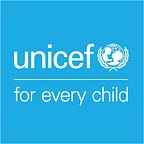The making of a president
Abu’s election journey
Ahmadiya Muslim Primary School in Sierra Leone is working hard to ensure that education is built around children’s needs, and those efforts are driving better learning results. Children are encouraged to participate actively not only in their education, but also in their school community. A student government is just one way children are getting more involved — some even go on to become president.
It’s a morning full of excitement and nerves for 12-year-old Abu Bangura. He is one of Ahmadiya’s candidates for Student Government President, and today is election day.
But the day must begin like any other. As soon as it becomes light, Abu begins his morning chores: sweeping his family’s compound, making a fire and washing dishes. He also fetches water for his bath.
On mornings when Abu has food leftover from the previous night’s dinner, he heats it for breakfast using the fire he has made.
Then he’s off to school, after telling his aunt goodbye. He wants to arrive early on such an important day.
At school, Abu volunteers to solve an arithmetic problem.
“My favourite thing is going to the blackboard,” he says.
“Some of the others don’t know how to write on the blackboard,” he continues, “and they don’t understand what we’re learning. I like standing in front of my colleagues and helping them learn.”
Teacher Alice Kamara announces that it’s time for the election to begin. UNICEF has provided teacher training for the school’s educators, helping them to learn pedagogical methods that fully engage students in the learning process.
Ms. Kamara gives the election officials signs indicating their roles. The student government empowers children to have a voice in addressing issues that affect them.
Then Ms. Kamara posts signs outside the polling station, guiding the student voters through the electoral process.
Students take turns entering the station, where they receive a ballot from a designated issuer.
Then, under the watchful eye of the election observers and Presiding Officer, students mark their choice for president and drop the ballot in a box.
On their way out of the polling station, students’ fingers are marked to prevent duplicate voting.
The Presiding Officer counts the ballots, holding each one up for all to see. Near the end, Abu has 93 votes, while his opponent, Kadiatu, has 84.
“I could see that there was still a stack of ballots to count. I just knew she was going to win,” Abu later said.
After the last ballot is counted, the Election Commissioner announces the results. It’s a close call: 93 votes for Abu, 91 for Kadiatu.
The post-election celebration begins as Abu is hoisted onto the shoulders of his fellow students for a victory lap around the schoolyard.
Then Abu addresses his classmates at assembly for the first time…
…as their newly elected president.
Originally published on www.unicef.org/photography in August 2014.
